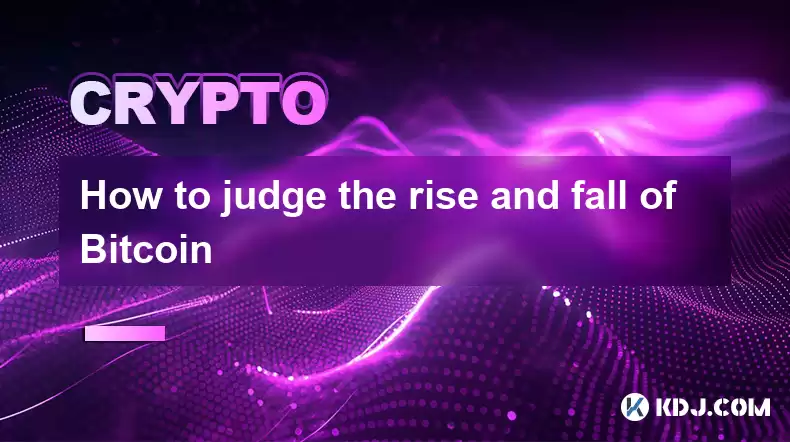-
 Bitcoin
Bitcoin $118400
0.47% -
 Ethereum
Ethereum $3836
2.20% -
 XRP
XRP $3.157
2.98% -
 Tether USDt
Tether USDt $0.9999
-0.03% -
 BNB
BNB $801.5
1.31% -
 Solana
Solana $180.9
2.07% -
 USDC
USDC $0.9999
-0.02% -
 Dogecoin
Dogecoin $0.2225
2.50% -
 TRON
TRON $0.3285
-1.02% -
 Cardano
Cardano $0.7789
2.60% -
 Hyperliquid
Hyperliquid $43.60
2.39% -
 Sui
Sui $3.892
4.41% -
 Stellar
Stellar $0.4229
3.34% -
 Chainlink
Chainlink $18.01
3.98% -
 Hedera
Hedera $0.2745
6.77% -
 Bitcoin Cash
Bitcoin Cash $582.3
3.38% -
 Avalanche
Avalanche $23.77
1.04% -
 Ethena USDe
Ethena USDe $1.001
0.01% -
 Toncoin
Toncoin $3.493
3.59% -
 Litecoin
Litecoin $110.0
2.48% -
 UNUS SED LEO
UNUS SED LEO $8.936
-0.37% -
 Shiba Inu
Shiba Inu $0.00001304
2.49% -
 Uniswap
Uniswap $9.999
1.09% -
 Polkadot
Polkadot $3.897
3.26% -
 Monero
Monero $308.6
-0.83% -
 Dai
Dai $0.9999
-0.01% -
 Bitget Token
Bitget Token $4.504
-0.04% -
 Pepe
Pepe $0.00001154
2.95% -
 Cronos
Cronos $0.1471
3.06% -
 Ethena
Ethena $0.6691
19.53%
How to judge the rise and fall of Bitcoin
By analyzing chart patterns, trend indicators, momentum oscillators, and fundamental factors like network health and market sentiment, investors can gain valuable insights into Bitcoin's price movements.
Feb 04, 2025 at 01:07 pm

Key Points:
Technical Analysis:
- Chart patterns (e.g., double tops/bottoms, triangles)
- Trend indicators (e.g., moving averages, Bollinger Bands)
- Momentum oscillators (e.g., RSI, MACD)
Fundamental Analysis:
- Network health (e.g., transaction volume, hashrate)
- Market sentiment (e.g., news, social media, Google Trends)
- Regulations and macroeconomic factors
Technical Analysis
Identify Chart Patterns:
- Double tops/bottoms: Reversals that indicate a shift in market sentiment.
- Triangles: Consolidation patterns that can break out in either direction.
- Head and shoulders: Reversals that indicate a trend change.
Use Trend Indicators:
- Moving averages: Smooth out price fluctuations to identify trends.
- Bollinger Bands: Determine overbought/oversold conditions.
Interpret Momentum Oscillators:
- Relative Strength Index (RSI): Measures overbought/oversold conditions.
- Moving Average Convergence Divergence (MACD): Identifies bullish/bearish momentum.
Fundamental Analysis
Assess Network Health:
- Transaction volume: High volume signifies increased usage and demand.
- Hashrate: Measures the computational power securing the network.
Monitor Market Sentiment:
- News and media coverage: Positive or negative news can drive sentiment.
- Social media buzz: Monitor social media platforms for bullish/bearish sentiment.
- Google Trends: Track search trends for "Bitcoin" to gauge interest.
Consider Regulations and Macroeconomic Factors:
- Regulations: Government policies can impact Bitcoin's legal status and adoption.
- Macroeconomic factors: Economic conditions can influence investor appetite for risk.
Additional Factors:
- Mining Difficulty: As the hashrate increases, Bitcoin becomes harder to mine, potentially slowing down supply growth.
- Halving Events: Periodic events where the block reward for miners is halved, reducing the supply of new Bitcoins.
- Ecosystem Development: The growth and maturity of the Bitcoin ecosystem, including exchanges, wallets, and applications, can impact its value.
FAQs
How reliable are these methods?
- While these methods provide valuable insights, they are not infallible. Market conditions can be unpredictable, and multiple factors interact to influence Bitcoin's price.
What time frame should I use?
- Different time frames (e.g., daily, weekly, monthly) can provide different perspectives. Consider the specific trading strategy and timeframe that aligns with your goals.
What are some common pitfalls?
- Emotional trading, lack of a trading plan, and relying solely on one indicator can lead to poor decisions.
How can I minimize risk?
- Implement risk management strategies such as stop-loss orders, leverage control, and position sizing to protect your capital.
Is Bitcoin a good investment?
- The decision of whether or not to invest in Bitcoin depends on your individual financial situation, risk tolerance, and investment goals. It is essential to conduct thorough research and proceed with caution.
Disclaimer:info@kdj.com
The information provided is not trading advice. kdj.com does not assume any responsibility for any investments made based on the information provided in this article. Cryptocurrencies are highly volatile and it is highly recommended that you invest with caution after thorough research!
If you believe that the content used on this website infringes your copyright, please contact us immediately (info@kdj.com) and we will delete it promptly.
- Pudgy Penguins Price Prediction: Buying Opportunity or Insider Dump?
- 2025-07-31 18:50:35
- Shrapnel, GalaChain, and China Gaming: A New Frontier
- 2025-07-31 19:10:35
- Dogecoin Howl: Bullish Signals and Analyst Bites – Is the Meme Coin Ready to Pounce?
- 2025-07-31 18:30:16
- Decoding Crypto Presales, Ethereum's Role, and Navigating a Tricky Altcoin Season
- 2025-07-31 18:30:16
- Bolivia, Crypto, and El Salvador: A Shifting Landscape
- 2025-07-31 18:50:35
- DAOs, Tokenomics, and Game Communities: Leveling Up the Game
- 2025-07-31 18:56:31
Related knowledge

What is the significance of the 21-week EMA in a Bitcoin bull market?
Jul 10,2025 at 06:56pm
Understanding the 21-Week EMA in Cryptocurrency AnalysisThe 21-week Exponential Moving Average (EMA) is a technical indicator widely used by traders a...

How to identify a volatility contraction pattern on Bitcoin using indicators?
Jul 07,2025 at 07:28am
What is a Volatility Contraction Pattern in Bitcoin Trading?A volatility contraction pattern refers to a phase where the price movement of an asset, s...

Do indicators work better on a logarithmic or linear scale for Bitcoin's long-term chart?
Jul 08,2025 at 01:42pm
Understanding Chart Scales in Cryptocurrency TradingIn cryptocurrency trading, particularly for analyzing Bitcoin's long-term trends, chart scales pla...

What is the Woodies CCI indicator and can it be used for Bitcoin?
Jul 04,2025 at 05:14pm
Understanding the Woodies CCI IndicatorThe Woodies CCI indicator is a variation of the traditional Commodity Channel Index (CCI), which was originally...

How to use indicators to trade the opening range breakout for Bitcoin CME futures?
Jul 05,2025 at 07:35pm
What Is the Opening Range Breakout Strategy?The opening range breakout (ORB) strategy is a popular trading technique used in both traditional markets ...

How to use the Relative Vigor Index (RVI) for Bitcoin trading?
Jul 07,2025 at 02:00pm
Understanding the Relative Vigor Index (RVI)The Relative Vigor Index (RVI) is a technical analysis tool used to assess the strength of price movements...

What is the significance of the 21-week EMA in a Bitcoin bull market?
Jul 10,2025 at 06:56pm
Understanding the 21-Week EMA in Cryptocurrency AnalysisThe 21-week Exponential Moving Average (EMA) is a technical indicator widely used by traders a...

How to identify a volatility contraction pattern on Bitcoin using indicators?
Jul 07,2025 at 07:28am
What is a Volatility Contraction Pattern in Bitcoin Trading?A volatility contraction pattern refers to a phase where the price movement of an asset, s...

Do indicators work better on a logarithmic or linear scale for Bitcoin's long-term chart?
Jul 08,2025 at 01:42pm
Understanding Chart Scales in Cryptocurrency TradingIn cryptocurrency trading, particularly for analyzing Bitcoin's long-term trends, chart scales pla...

What is the Woodies CCI indicator and can it be used for Bitcoin?
Jul 04,2025 at 05:14pm
Understanding the Woodies CCI IndicatorThe Woodies CCI indicator is a variation of the traditional Commodity Channel Index (CCI), which was originally...

How to use indicators to trade the opening range breakout for Bitcoin CME futures?
Jul 05,2025 at 07:35pm
What Is the Opening Range Breakout Strategy?The opening range breakout (ORB) strategy is a popular trading technique used in both traditional markets ...

How to use the Relative Vigor Index (RVI) for Bitcoin trading?
Jul 07,2025 at 02:00pm
Understanding the Relative Vigor Index (RVI)The Relative Vigor Index (RVI) is a technical analysis tool used to assess the strength of price movements...
See all articles

























































































